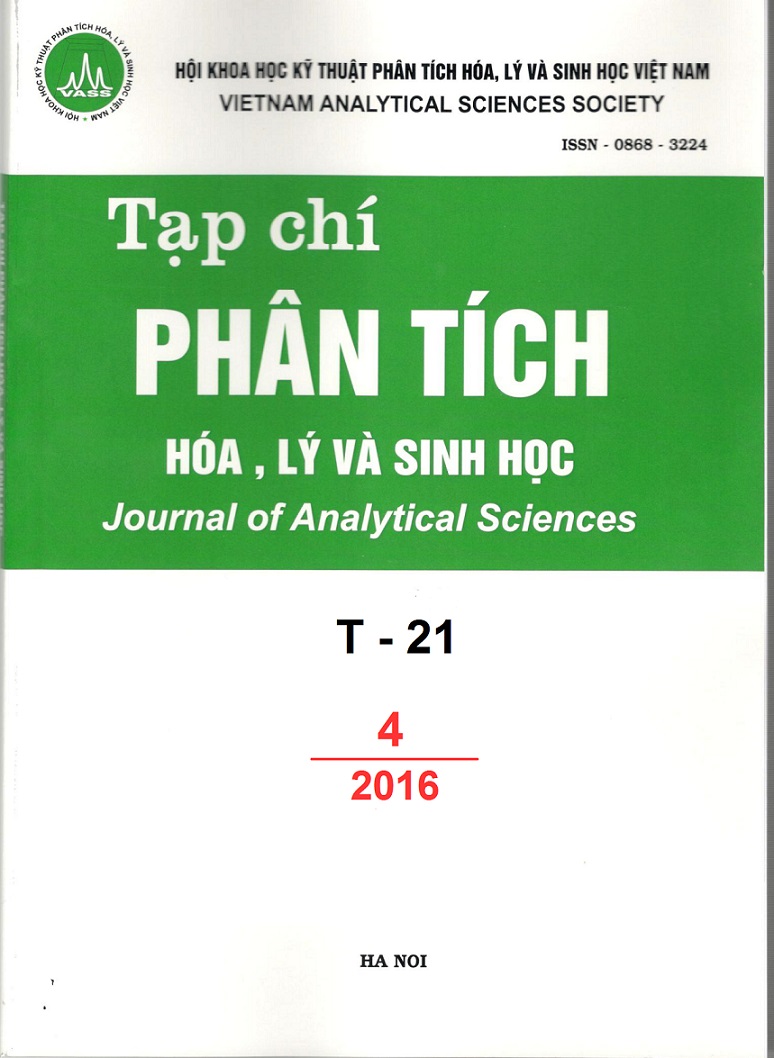ANALYSIS AND ASSESSMENT OF GEOCHEMICAL SPECIATION OF HEAVY METALS IN SEDIMENT CORES COLLECTED IN HAI DUONG’S RIVERS
Abstract
The accumulation of heavy metals in sediment is a serious problem that creates a hazard to environments and human health when metals are transferred to water and plants. Thus, determination of the chemical form of a metal in sediment is used to evaluate its mobility and bioavailability. In this study, sequential extraction was used to fractionate nine heavy metals (Cu, Pb, Zn, Cd, Co, Fe, Ni, Mn and Cr) from six sampling sites of rivers in Hai Duong province into five operationally defined groups: exchangeable, carbonate, Fe-Mn oxide, organic and residual. Analysis of the extracts was carried out by Inductively Coupled Plasma-Mass Spectrometry (ICP-MS). The observed results indicated that 4 main groups of metal including Cd, Mn (exchangeable, carbonate group), Zn, Fe, Co (Fe-Mn oxide group), Cu, Pb (organic group), Cr, Ni (residual group). From the results of correlation and principle component analyses, there were 3 PCs with different contamination sources: (1) the Cu, Pb, Cd and Mn resulted from originally anthropogenic sources; (2) the Cr, Fe and Ni derived from natural geological sources - lithogenic component; (3) combined component consisting of Zn, Co.
Keywords: heavy metals, geochemical speciation, sediment cores, sequential extraction.

